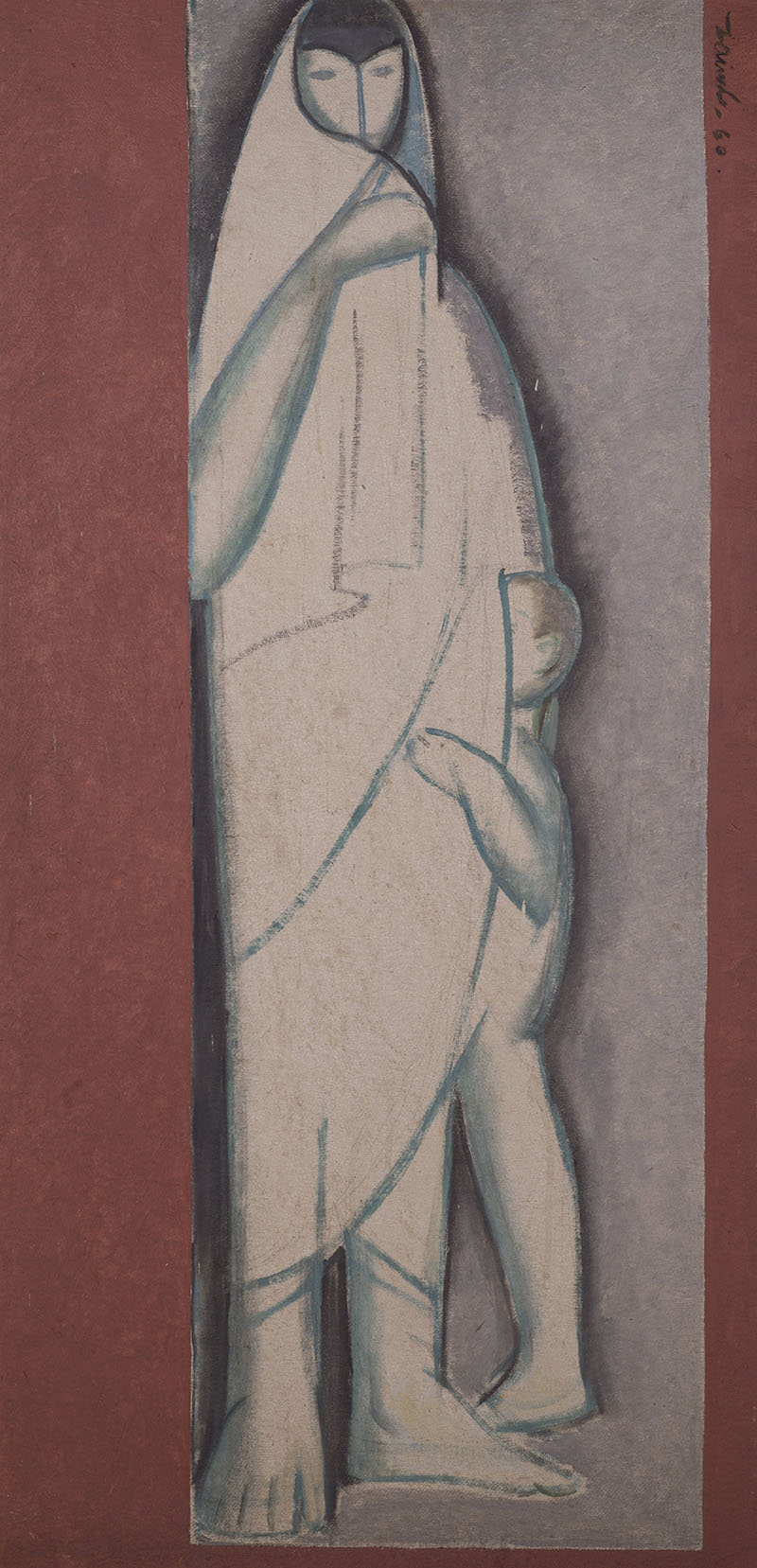Twentieth-century Bangladeshi artist, educator and activist considered to be one of the pioneers of modern Bangladeshi art, Zainul Abedin is known for his realist work, especially his documentation of the Bengal famine of 1943.
Born in Mymensingh, East Bengal (now Bangladesh), Abedin studied painting at the Government School of Art and Craft, Calcutta (now Kolkata), from 1933–38, where he also taught from 1940–47. In 1947, he returned to East Bengal, where he helped found the Institute of Fine Arts, Dhaka, and also served as the principal of the organisation from 1948–49. He travelled widely, including across Europe in 1951–52, as well as Japan, North America and Mexico in 1956 on a Rockefeller Foundation grant. He was actively involved in the Bangladesh Liberation War movement, especially towards preserving and promoting the folk arts and culture of Bengal. To this end, in 1975, he founded the Folk Art Museum in Sonargaon, Bangladesh, and the Zainul Abedin Sangrahashala Gallery in Mymensingh.
Throughout the 1930s, Abedin sketched the cityscape as well as people of rural and urban Kolkata. By the beginning of the 1940s, his realistic style had graduated from strict naturalism to the adoption of a socially conscious aesthetic, which was reinforced by the Bengal famine, of which he produced several drawings on brown paper using common ink. These works were instrumental in shifting his style from naturalistic drawings to Expressionist works. When exhibited in London in 1948, these works won Abedin widespread acclaim. He continued to create famine drawings until his death, including sketches of refugees in relief camps in Syria and Jordan in the 1970s.
Abedin went on to exhibit his works at various exhibitions across the world, including at the Imperial Institute, London (1951) and Berkeley Galleries (1952). He also represented Pakistan at the UNESCO Art Conference, Venice (1952). He received the Presidential Award for Pride of Performance from the Government of Pakistan (1958) as well as an honorary degree from the University of Delhi and an appointment as the National Professor of Bangladesh (1974). In 1977, he was posthumously awarded the Independence Day Award by the government of Bangladesh. His works are part of the collections of the Academy of Fine Arts, Kolkata; the Lahore Museum; and the Bangladesh National Museum, Dhaka.
Abedin died in 1976 in Dhaka.







